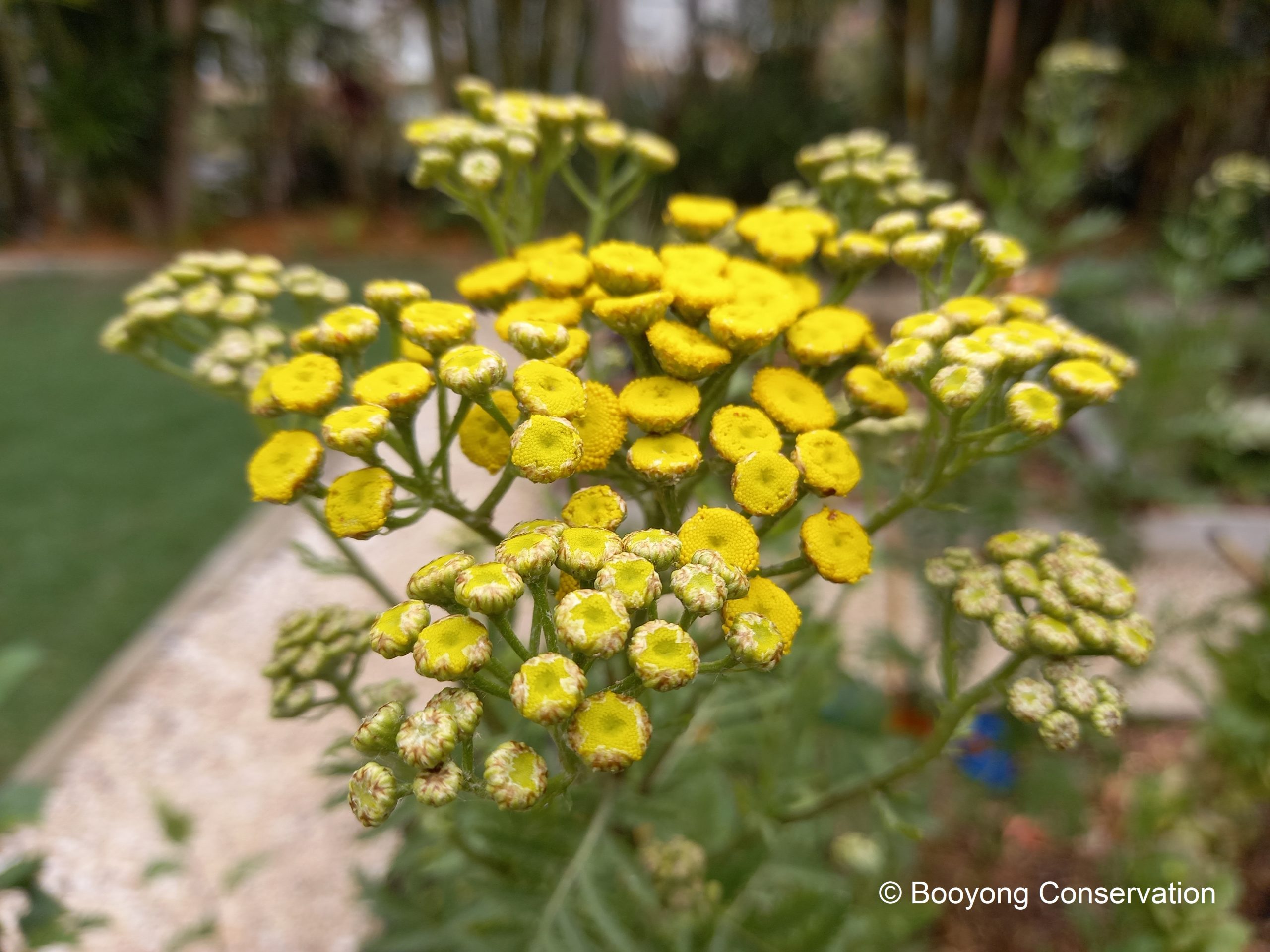This bright yellow coloured perennial herb Common Tansy (Tanacetum vulgare) has been grown at Booyong to attract beneficial insects and contribute potassium to the soil. It has bright button like flowers, is easy to grow and makes lovely dried bouquets.
Growing – In some parts of the world Tansy is considered a weed and it is toxic to animals and human and not considered edible. Tansy has clusters of bright yellow flowers which emerge in Summer on stems up to 1 metre. It has a strong camphor like aroma and is a natural repellent against insects.
Care – Tansy is low maintenance, extremely hardy (drought tolerant) and grows best in full sun, although can tolerate light shade. Plant Tansy in well-drained, fertile soil. Regular watering is not required and Tansy’s ae affected by extreme heat. It will be interesting to see how it goes in the hot Summer months at Booyong.
Tansy is for some considered an invasive plant. It can be dead headed to prevent spreading and removed by the roots easily when the soil is wet.
Pruning – Cut tansy to the ground in late Summer to protect from intense heat (placing leaves in compost or use as mulch) and fresh foliage will emerge in autumn. If you’re lucky, you may even get more flowers.
Companion Planting – Tansy can be grown beneath fruit trees, raspberries, roses and near vegetable gardens as it attracts beneficial insects like bees and ladybirds, in addition it will host braconid wasps (which feed on cabbage moth) and pirate bugs which feed on aphids, and spider mites.
Pests and Diseases – Few pests will affect Tansy due to their strong aroma.
The camphor-like scent of Tansy leaves is said to repel ants, flies, fleas, moths, mosquitoes, ticks, and even mice.
Harvest – As required harvest for use as natural textile dye or dry flowers for bouquets, they hold both their shape and colour beautifully.
Tansy adds Potassium to the soil and leaves can be added to compost piles to increase decomposition. Leaves can also be used as mulch to confuse birds on newly planted seedlings.
Propagation – Tansy can be grown from seed in Spring to early Summer, planted 1cm deep in moist soil and expected to germinate in 2 weeks. It also spreads readily by undergrown rhizomes and can be divided in Spring or Autumn.
The picture shown is at our Sydney garden (our kitten Kit in the background) where we often try plants out prior to growing them at Booyong. Tansy is now established in the herb spiral at Booyong and we will add more plants in the food forest to attract beneficial insects and provide compost and mulch to the garden.
Health Benefits – In medieval times, Tansy was commonly used for digestive tract problems including stomach and intestinal ulcers, certain gallbladder conditions, migraines, nerve pain, joint pain, and many other conditions. There is little scientific evidence to support this use.
Eating – Tansy is toxic and should not be consumed, especially if pregnant. It can also cause allergic reactions to some people when leaves are touched.
Other uses – Tansy can be grown beside the chook pen fence to be grazed for de-worming and to repel bugs.
You can also make a nitrogen rich compost tea from Tansy leaves to fertilize your plants, just place a heap of leaves in a bucket of water covered with a lid for 3-6 weeks. Dilute it with water to the ration of 1 part tea: 10 parts water and water seedlings.
Tansy can also be hung in the cupboard to repel moths and fleas.

You must be logged in to post a comment.